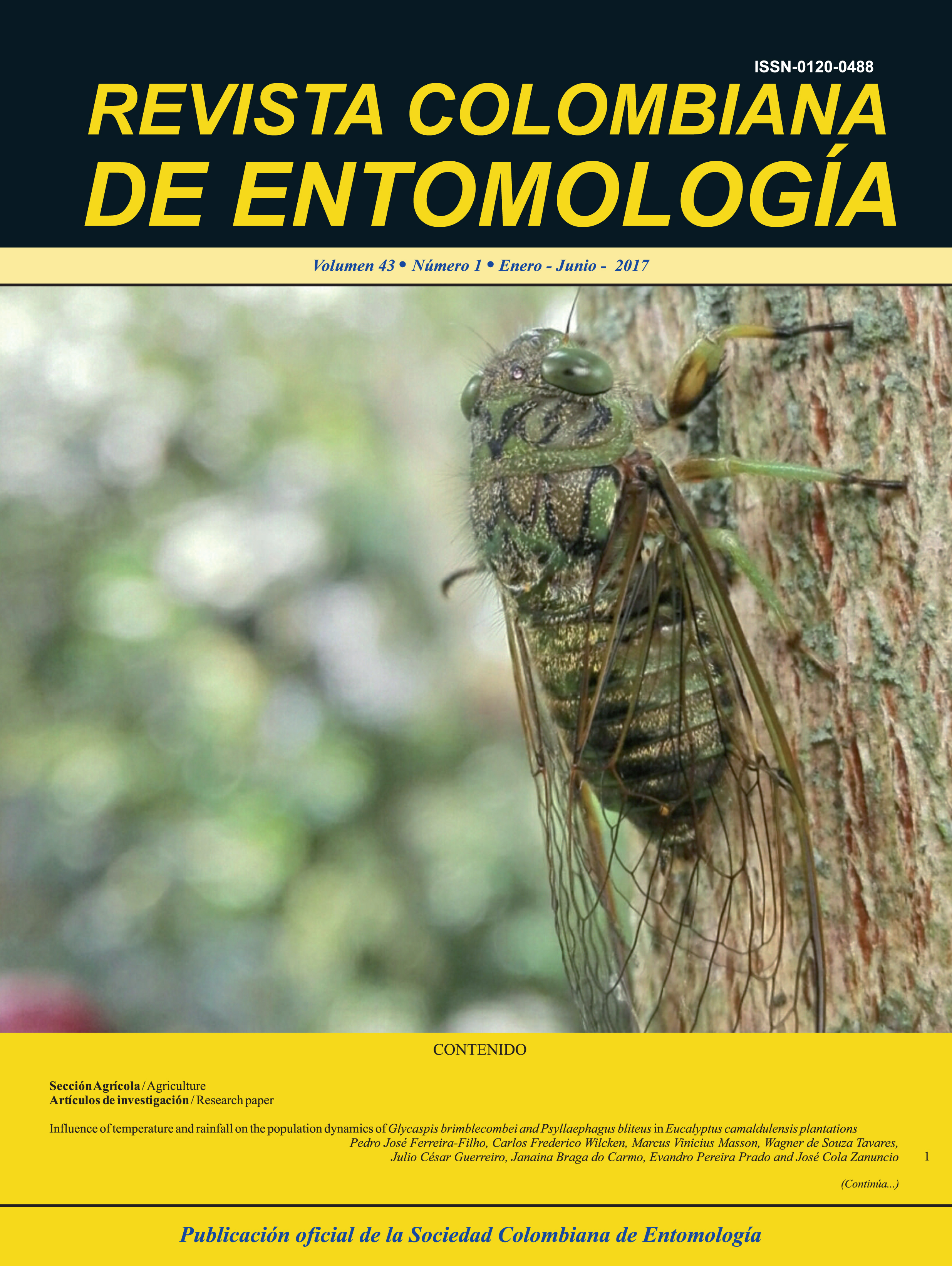Postharvest treatments for control of Conotrachelus dimidiatus (Coleoptera: Curculionidae) in guava (Psidium guajava)
Keywords:
Guava weevil, Hydrothermal treatment, Storage temperature treatmentMain Article Content
Guava (Psidium guajava) is one of the most common fruit trees cultivated in Latin America; however, its production is delimited by different insect pests that affect fruit quality, including the guava weevil Conotrachelus dimidiatus. This study assessed the effects of two post-harvest treatments (hydrothermal and temperature storage) in the control of C. dimidiatus, as well as physicochemical variables of treated guava fruits. The hydrothermal treatment presented mortality of larvae 70 minutes after immersion, while mortality of larvae was observed after the six days of evaluation in the temperature treatment. In both post-harvest treatments, the variables titratable physicochemical acidity and vitamin C did not present significant statistical differences among treatments; whereas, the degrees °Brix and ionic acidity showed significant differences with respect to the control. For the hydrothermal treatment, a decrease in the time of immersion is suggested in order to minimize or void the effects of the treatment tested. Regarding temperature, it was observed that the presence of larvae of C. dimidiatus in fruit leads to a reduction in the sugar content. Hence, more studies are needed to determine ideal temperatures in which the effects of the treatments are minimal or void on the physicochemical properties of guava fruit. These may be considered as an alternative to post-harvest control for this insect.
Downloads

This work is licensed under a Creative Commons Attribution-NonCommercial-ShareAlike 4.0 International License.
Authors retain the copyright on their work and are responsible for the ideas expressed in them. Once a manuscript is approved for publication, authors are asked for a publication license for the term of legal protection, for all territories that allows the use, dissemination and disclosure of the same.

